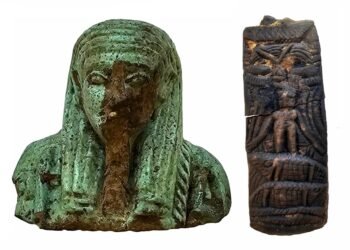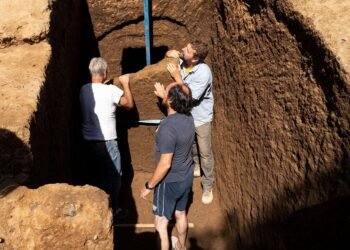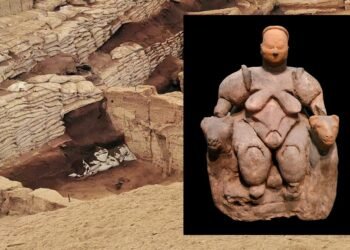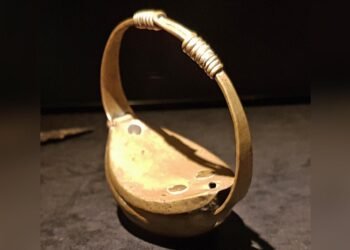A recent study, detailed in the Numismatic Chronicle, has unveiled the significant connections between the Vindelev Treasure and a network of European elites during the Migration Period. This treasure, discovered in 2020 by a metal detectorist, comprises 23 gold artifacts dating back to the Iron Age.

The treasure, which includes 13 gold bracteates from the 5th century CE, a granulated gold fitting possibly from a sword or knife, and four mounted Roman medallions from the 4th century CE, signifies a strong local power in Vindelev with connections to European elites. Among the bracteates is the largest known example, featuring a runic inscription, marking the earliest known mention of Odin.
Analysis of the four Roman medallions indicates that they were likely part of a network of elite individuals across Europe, possibly exchanged as bride payments or gifts.
Senior researcher Helle Horsnæs, who led the investigation, notes that while Vindelev was not previously thought to be a center of power during this period, the treasure suggests otherwise. Horsnæs states, “We don’t have any signs that there was supposed to be a power base in Vindelev at this time, so it is surprising for us to find objects that not only show local power but also European connections.”
The medallions, issued by different Roman emperors, had loops added by artisans outside the Roman Empire, indicating multiple exchanges before reaching Vindelev. Notably, one of the medallions bears the same stamp as a medallion found in Poland, suggesting widespread connections among the European elite during the Iron Age.
Horsnæs says, “It shows that the European network at this time in the Iron Age was widely branched and that the European elite were already connected to each other back then.”
The Vindelev Treasure raises questions about its deposition. Some speculate it may have been buried during a crisis, such as the Justinianic Plague, while others suggest its association with the 536 climate catastrophe.
The discovery highlights the influence of Roman culture in Northern Europe, with Roman gold coins serving as models for locally produced imitations, including the Nordic armrings found alongside Roman coins in various deposits.
























